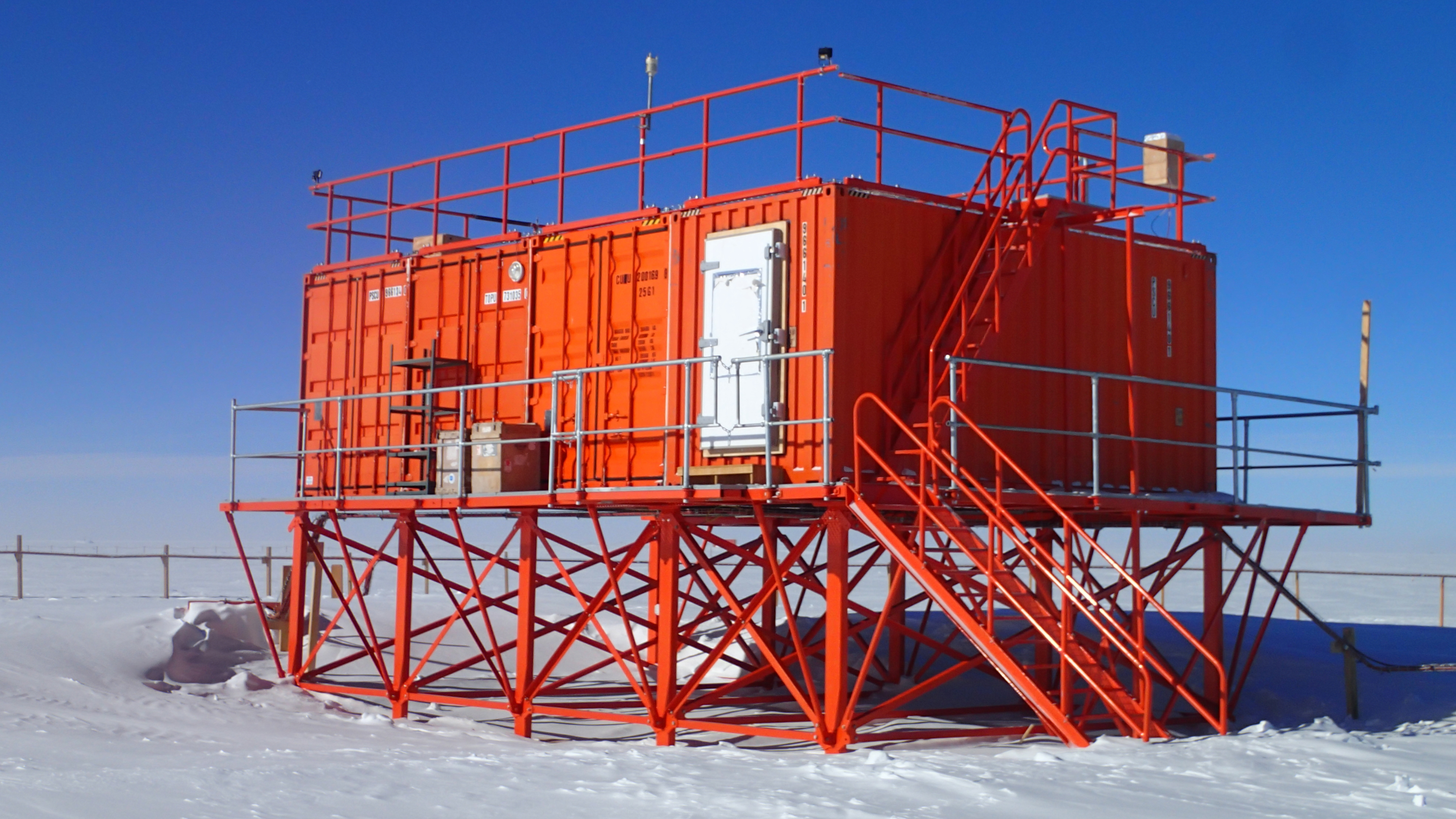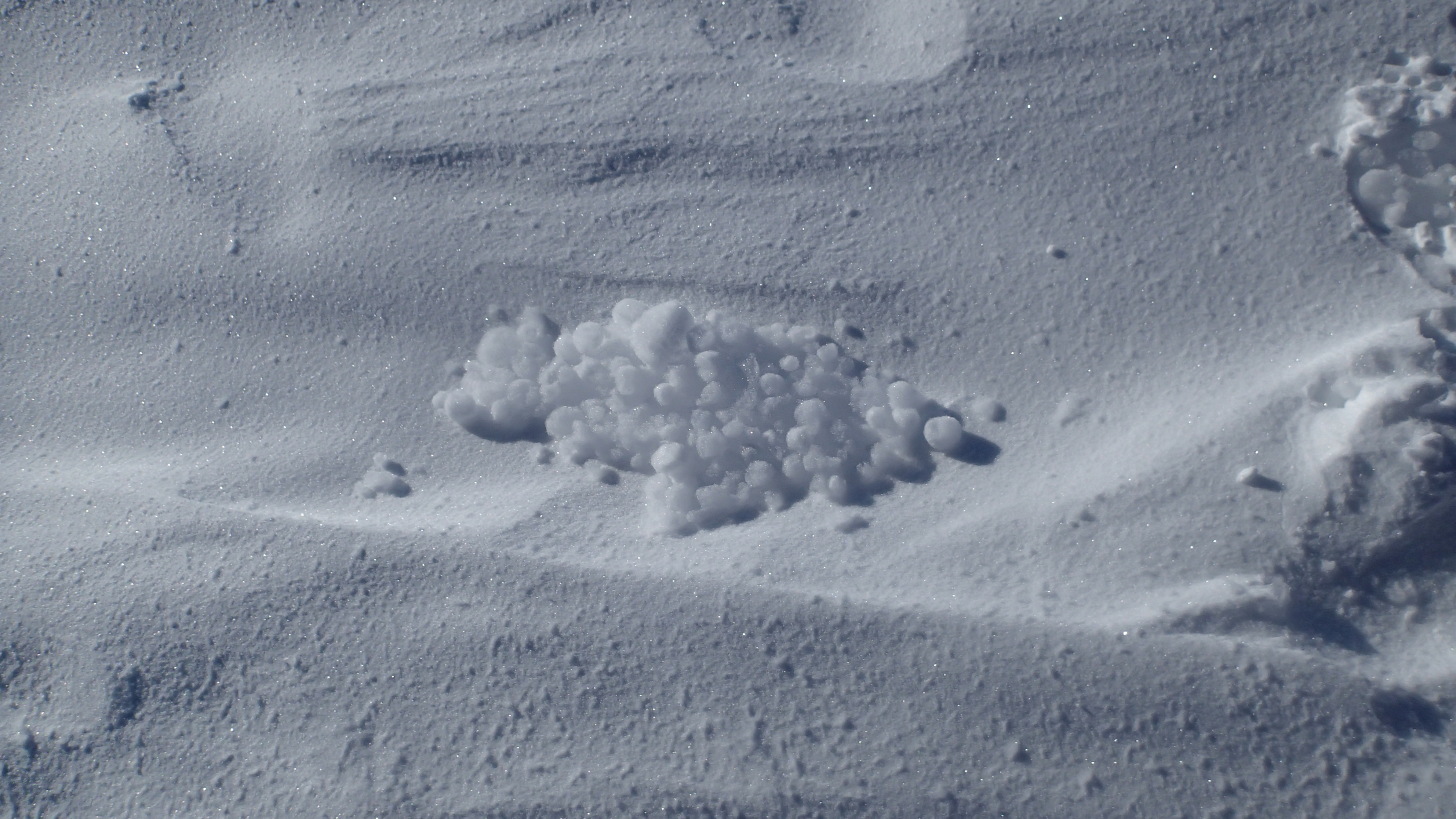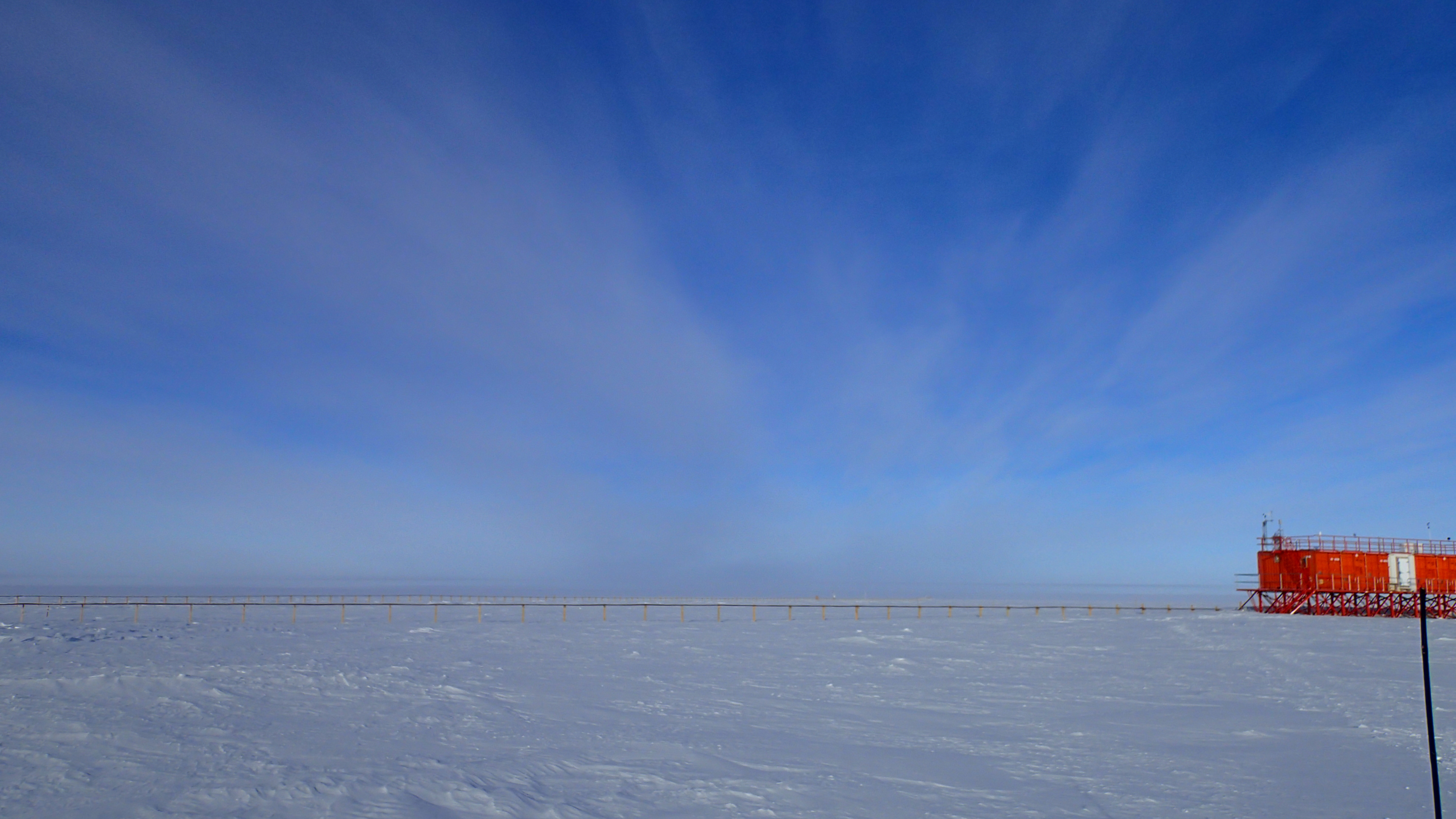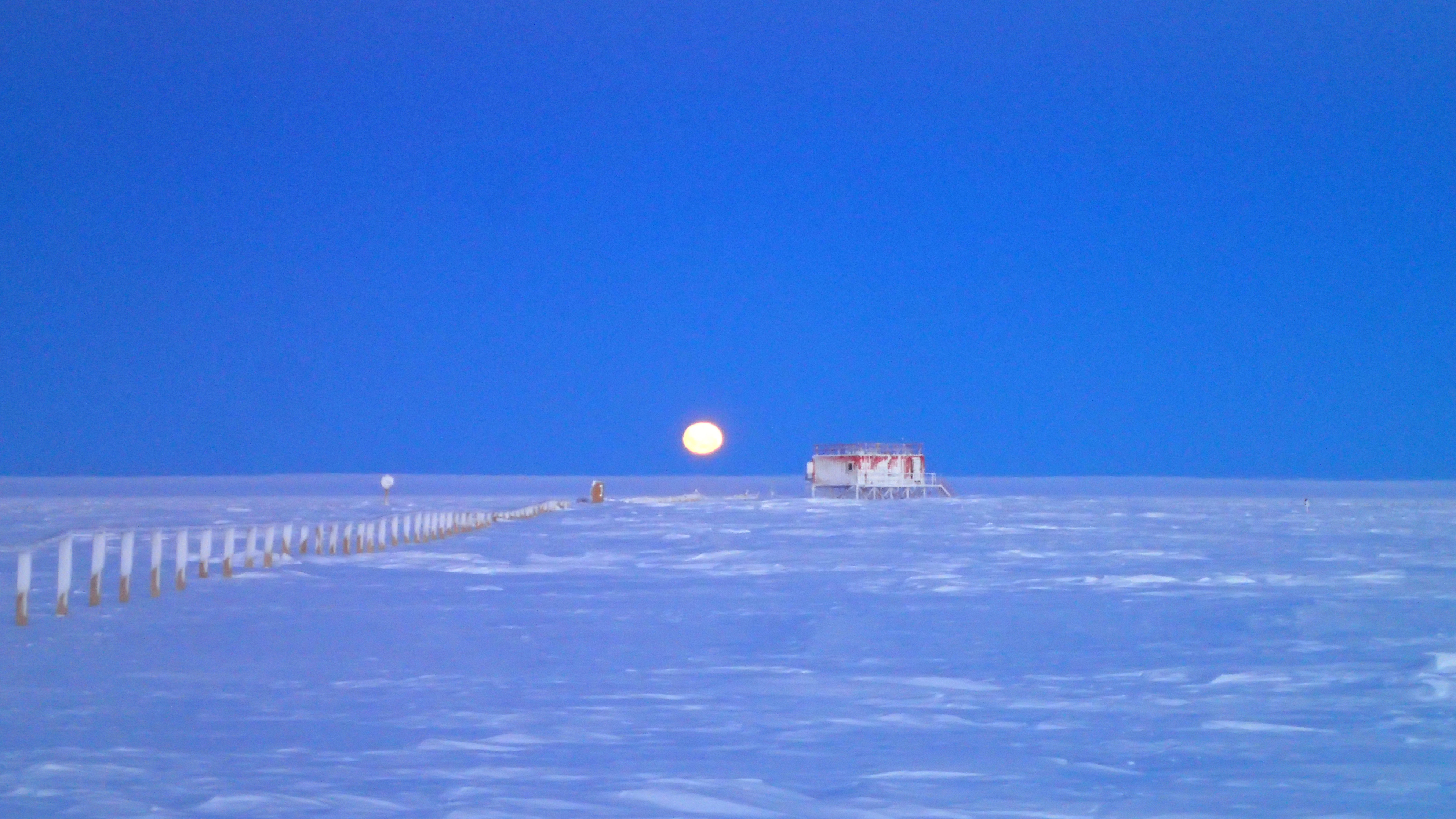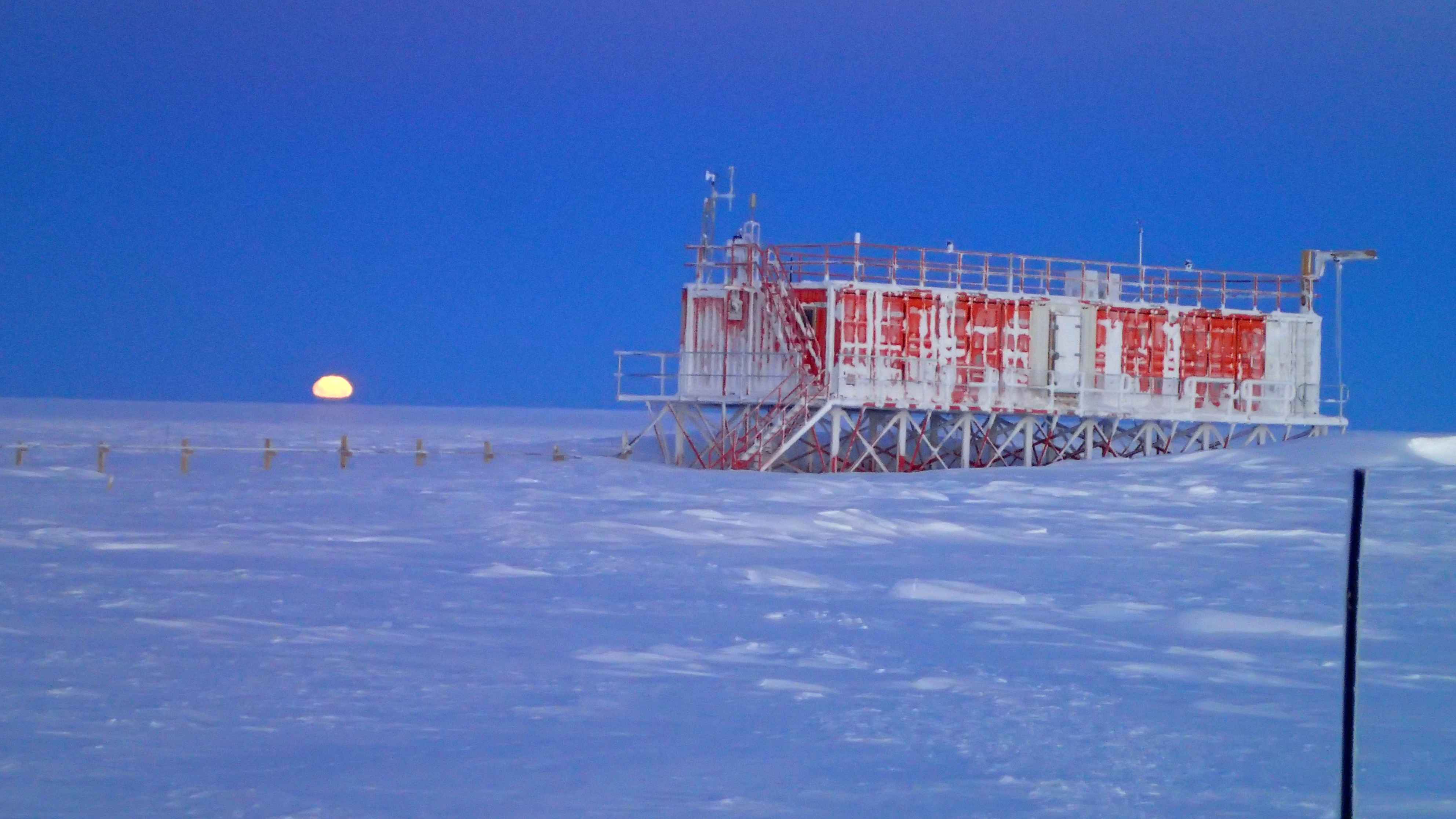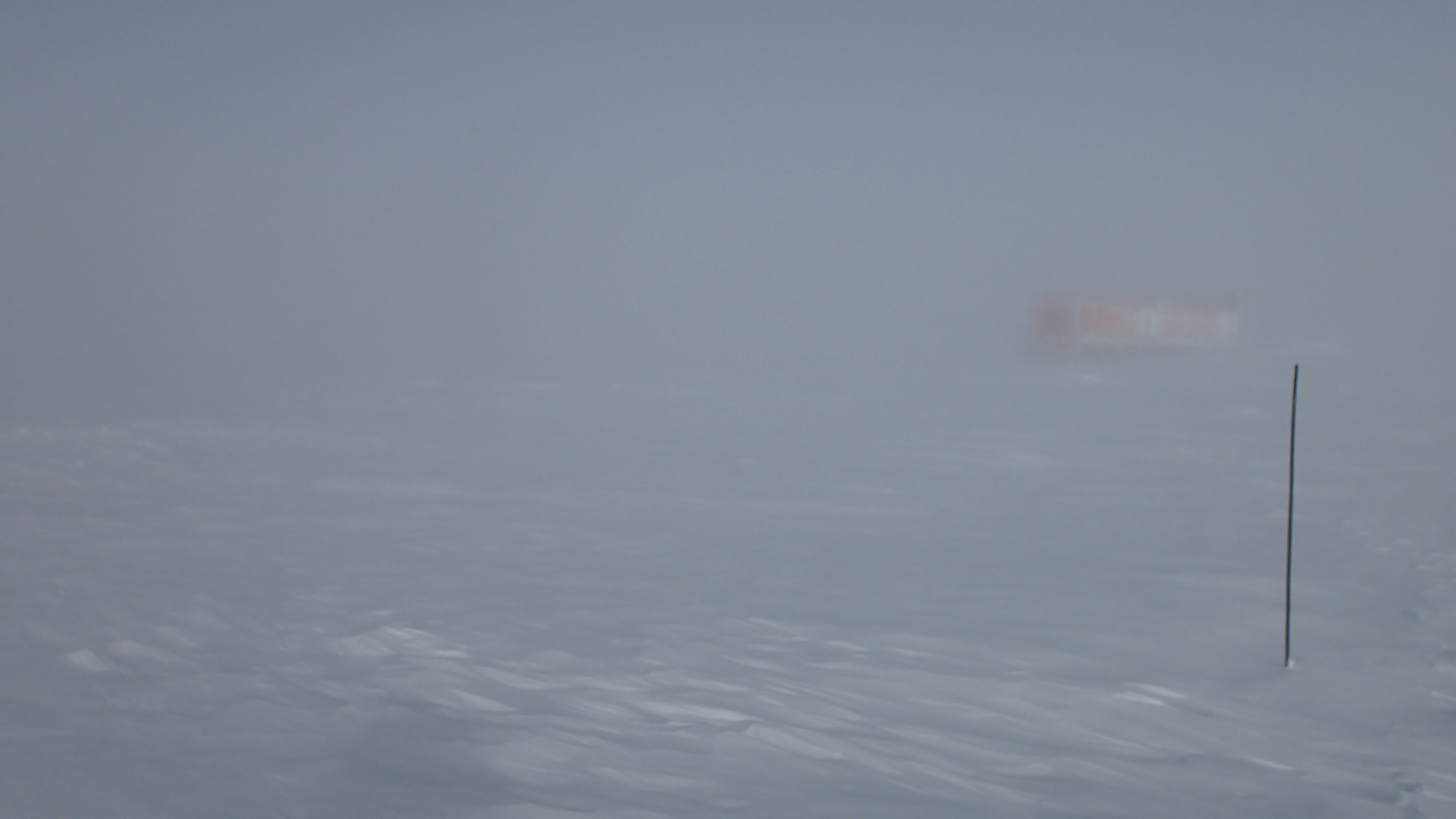Long Term Measurements of Chemical and Physical Properties of Atmospheric Aerosol at Dome C
Progetto
Questo progetto prevede l’installazione di un laboratorio che permetta di effettuare misure a lungo termine delle proprietà chimiche e fisiche dell’aerosol atmosferico a Dome C. Questo tipo di misure è fondamentale per comprendere meglio le sorgenti attuali del particolato e dei gas atmosferici, i loro processi di trasporto a lungo raggio, i loro meccanismi deposizionali e post-deposizionali, e la loro trasformazione chimica. L’ottenimento di un data set sufficientemente ampio è basilare sia per la comprensione delle variabili che influenzano il clima odierno, sia per una corretta interpretazione dei record paleoambientali da carote di ghiaccio, oltre che per la calibrazione dei modelli previsionali.
Oltre allo studio delle proprietà fisiche e chimiche dell’aerosol e dei gas atmosferici come l’ozono, è anche continuamente misurato il flusso di raggi cosmici per lo studio dell’attività solare e della precipitazione delle particelle ad alta energia.
Project
This project has main target the installation of a laboratory that allows to carry out long-term measurements of the chemical and physical properties of atmospheric aerosol at Dome C. This kind of measurement is fundamental to better understand the current sources of particulate matter and atmospheric gases, their long-range transport processes, their depositional and post-depositional mechanisms, and their chemical transformation. The achievement of a sufficiently large data set is fundamental both for understanding the variables that influence today's climate and for a correct interpretation of paleo-environmental records from ice cores, as well as for the calibration of predictive models.
Besides the study of the chemical and physical properties of atmospheric aerosol and gaseous as ozone, it is also measured continuously the cosmic ray flux for the study of the solar activity and the precipitation of high energy particles.
Scientific Objectives
- understanding the climate-aerosol feedback processes in regions that are very sensitive to environmental and climatic changes;
- establishing the background values of the atmospheric load, size distribution and chemical composition of aerosol;
- improving the reliability of climatic models by making available a long-term data set for a more effective evaluation of the forcings exerted by global aerosol (ERFari and ERFaci);
- studying, with sufficient statistics, the seasonal and inter-annual trend of the concentrations of key-components of aerosol (S-, N- and C-cycle compounds; biogenic emissions; dust; sea spray);
- evaluating the present source strength and long-range atmospheric transport efficiency of aerosol produced in the marine and continental areas at lower latitudes;
- estimating the contribution of aerosol sources to Antarctica from local to regional scale;
- studying the effects of photochemistry and radical sources (ozone) on chemical reactions of gaseous aerosol precursors and New Particles Formation in very peculiar (temperature, continuous summer irradiance) atmospheric conditions;
- improving the reliability of paleo-climatic and paleo-environmental reconstructions by ice core stratigraphies, also by a better knowledge of the aerosol- snow surface interchange;
- evaluating the possible role of cosmic rays in New Particle Formation (NPF) in an area where nucleation is unlikely due to low atmospheric concentrations of aerosol precursors.
Research Activities
Dome C
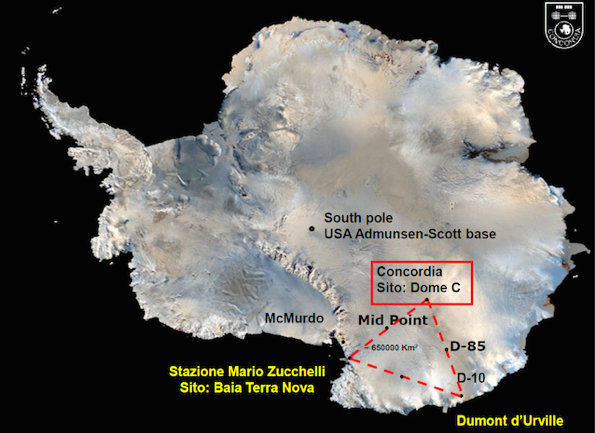
Dome C site (75°06′S, 123°21′E) is located at 3233 m a.s.l. on the East Antarctic plateau south of the Indian Ocean, about 1100 km from the coastline. Located on the top of a large dome with negligible slope, Dome C is not affected by the typical intense katabatic winds observed in Antarctica. The thickness of the ice cap is 3250±25 m, has a mean annual temperature of −53°C and a mean annual accumulation rate of some tens of mm of equivalent water (corresponding to about 7.4 cm of snow) per year at the surface. This small accumulation rate is due to the very low humidity in the atmosphere.
Dome C represents a strategic place for these studies, thanks to the remote location of the site, which is characterized by very low levels of contamination (both for the distance of the major sources of particulate and the high altitude, besides the isolation due to the establish of the winter polar vortex) and the proximity to the minimum of the geomagnetic field, which allow to measure a cosmic ray flux relatively high.
Shelters
| Surface snow (roughly 1 cm depth) is collected in a dedicated area, called "CLEAN AREA", 200 m far from ATMOS shelter |
| The ATMOS shelter is located at about 700 m away from Concordia Base, in an upwind position with respect to the prevailing winds, in order to minimize contamination from Base’s emissions. The shelter is devoted to all the chemical and glaciological experiments |
| The PHYSIC shelter is located at about 600 m away from Concordia Station. The shelter is devoted to all the physical experiments |

Instruments
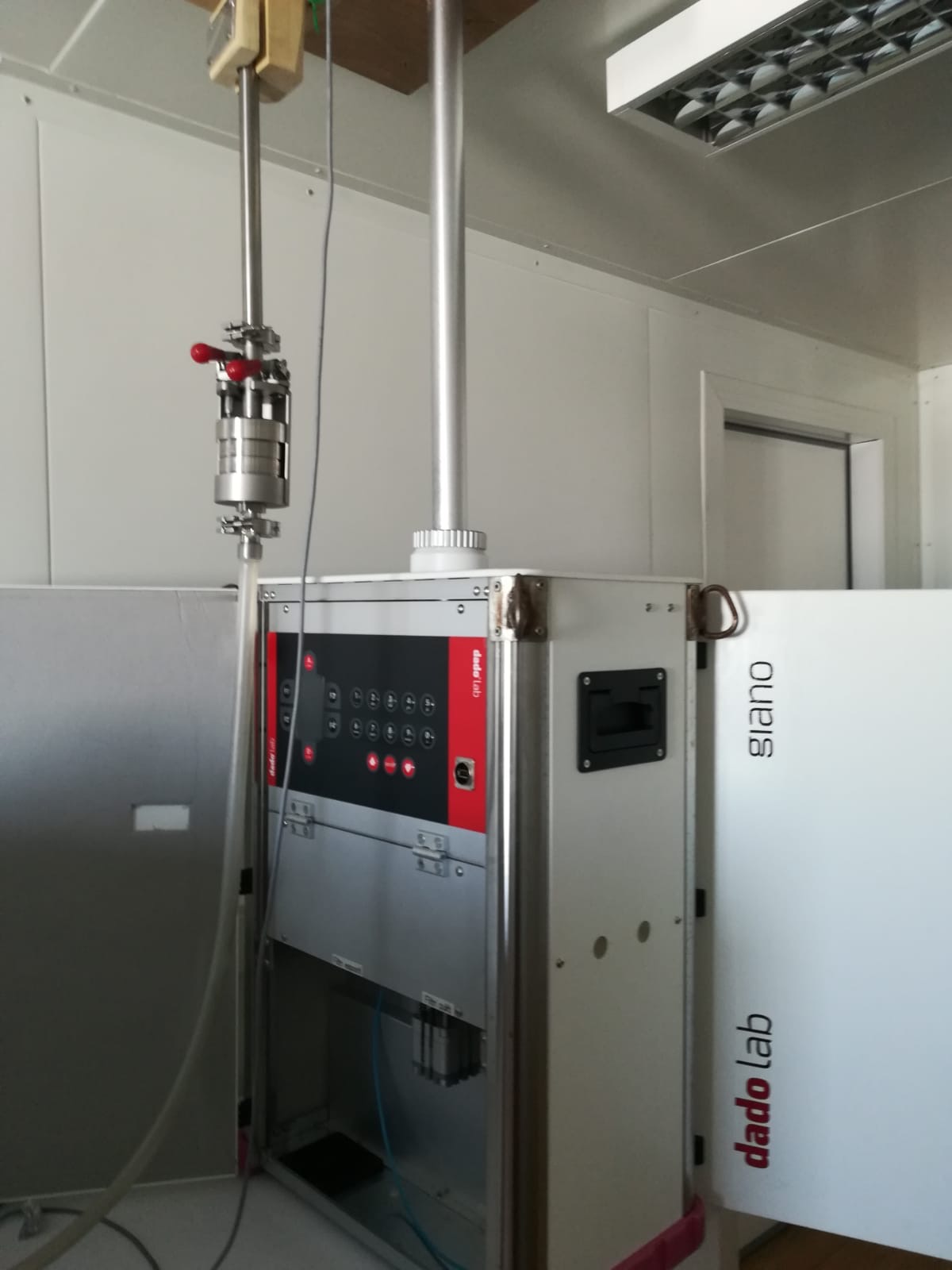
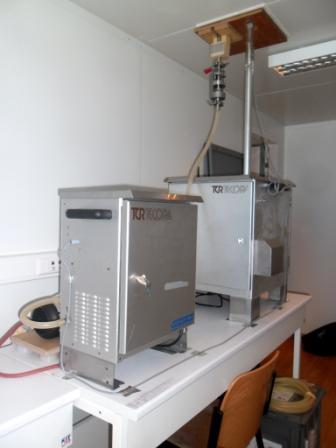
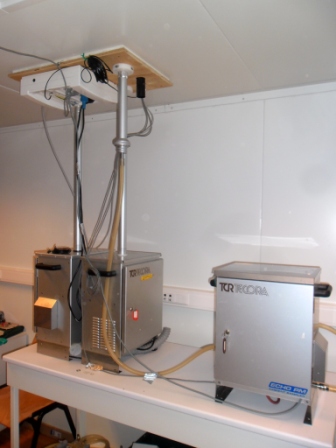
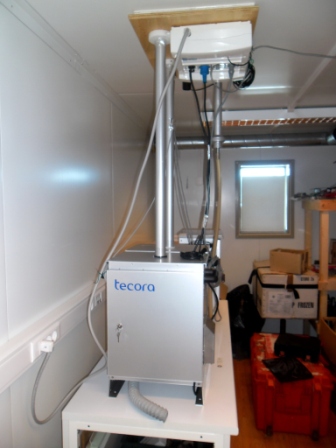
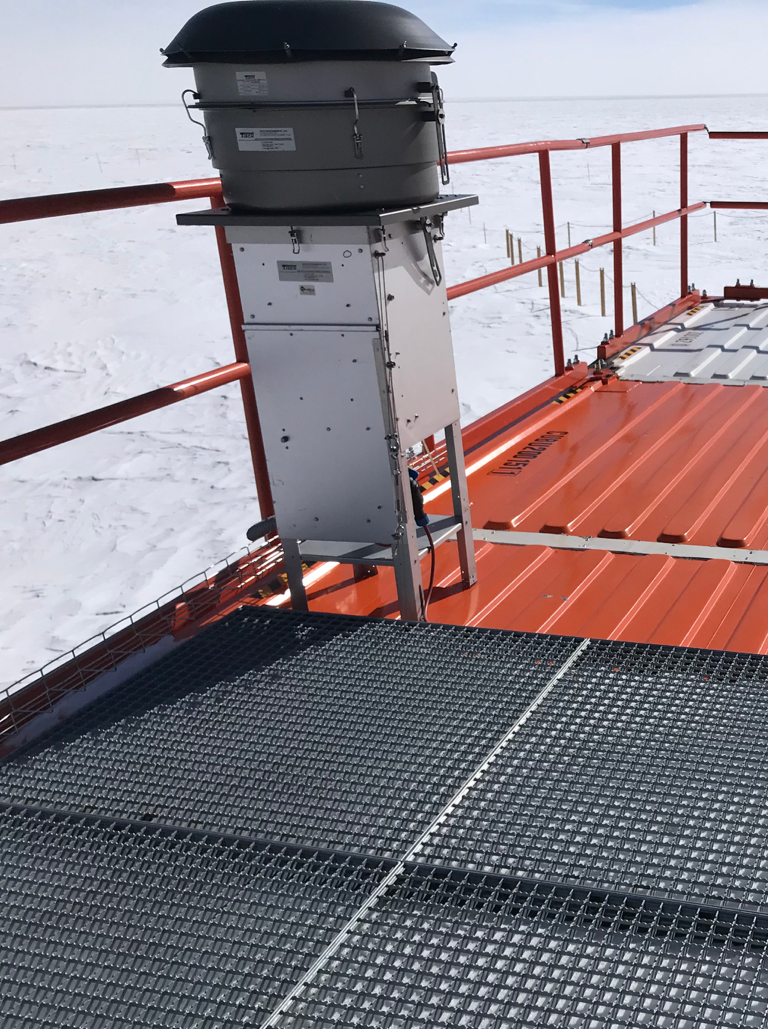
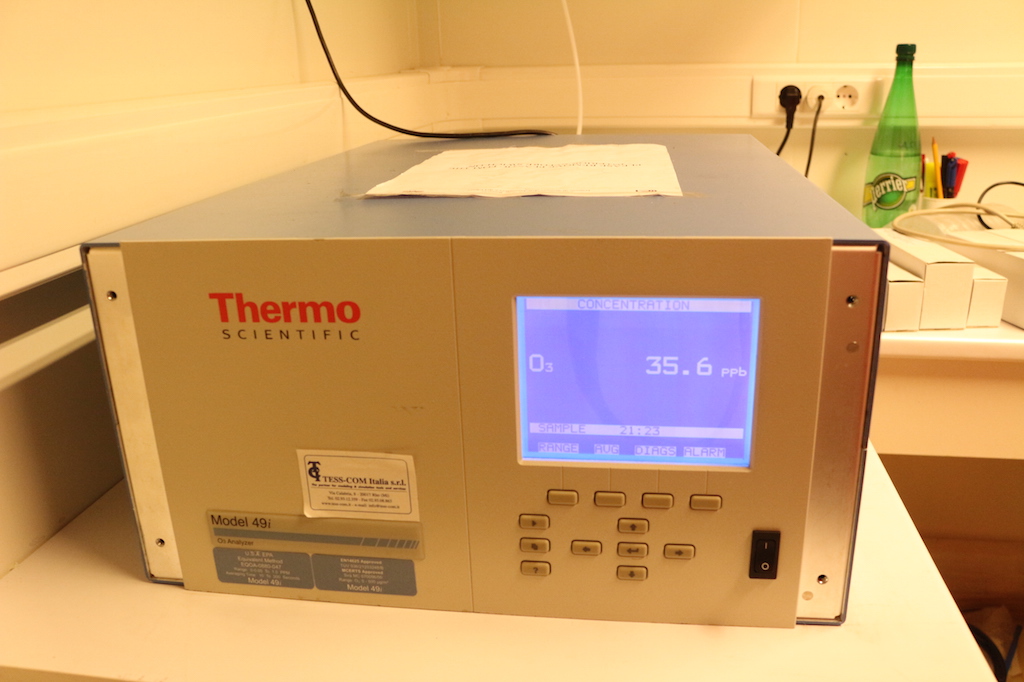
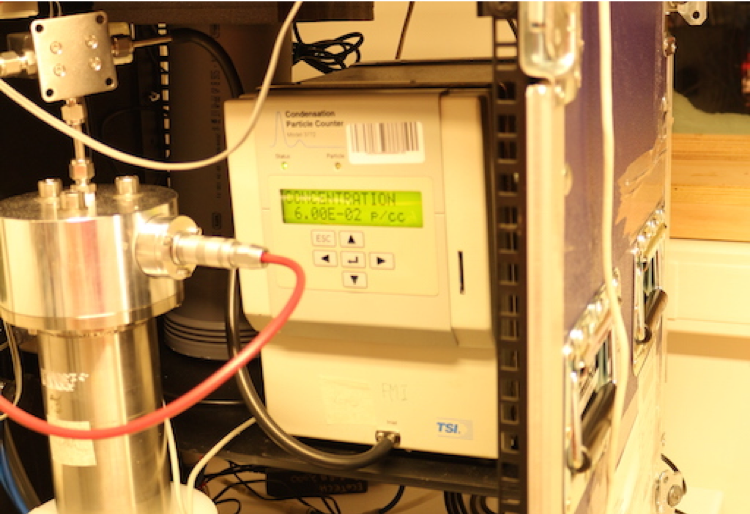
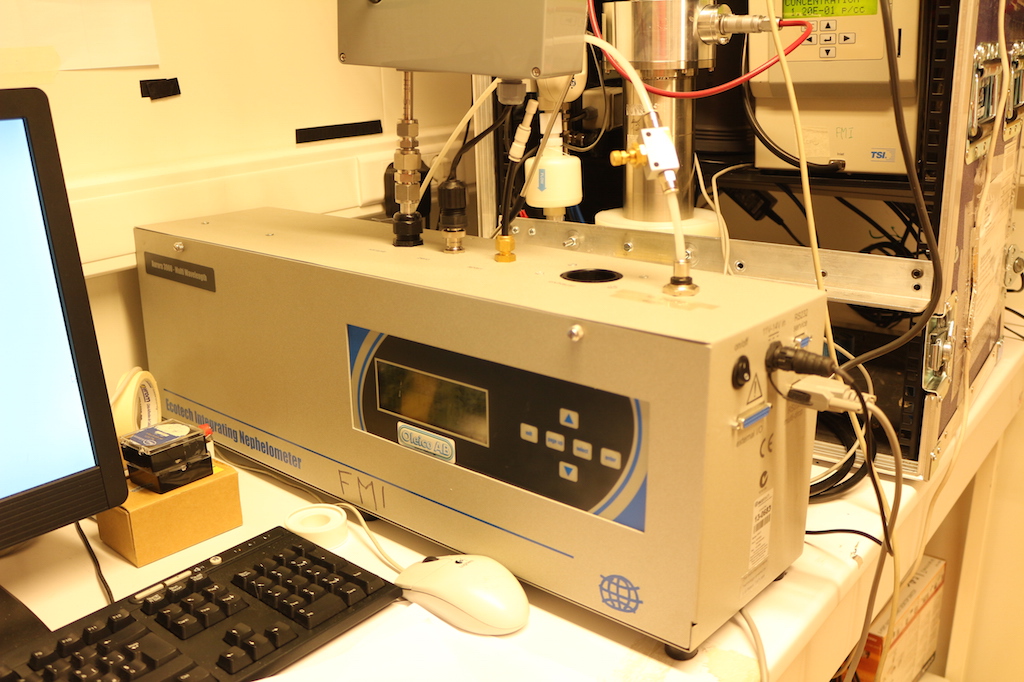
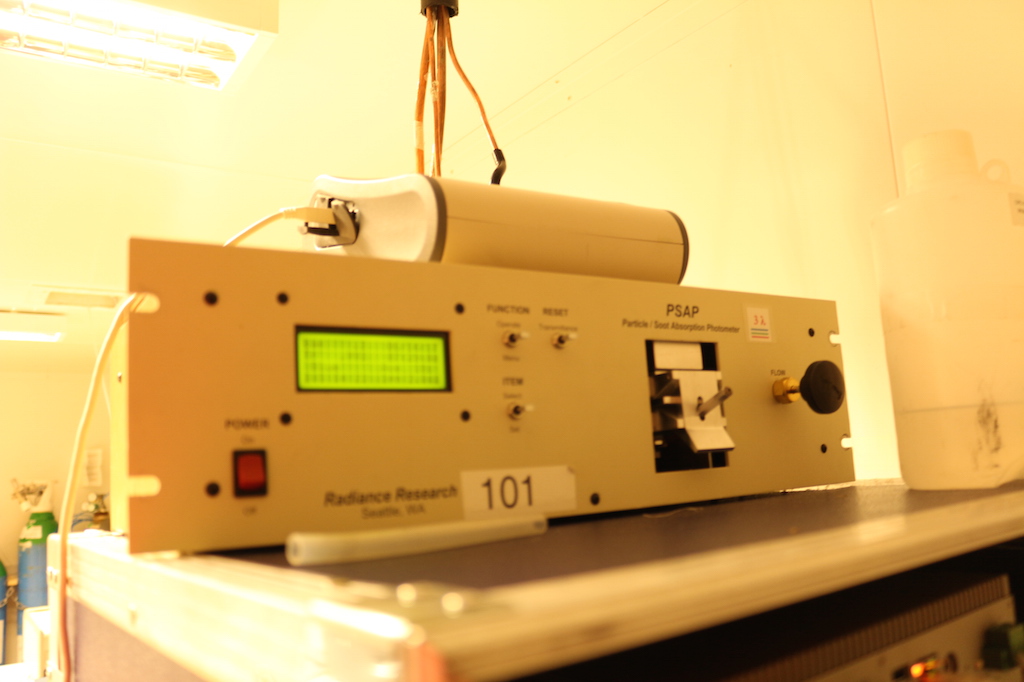
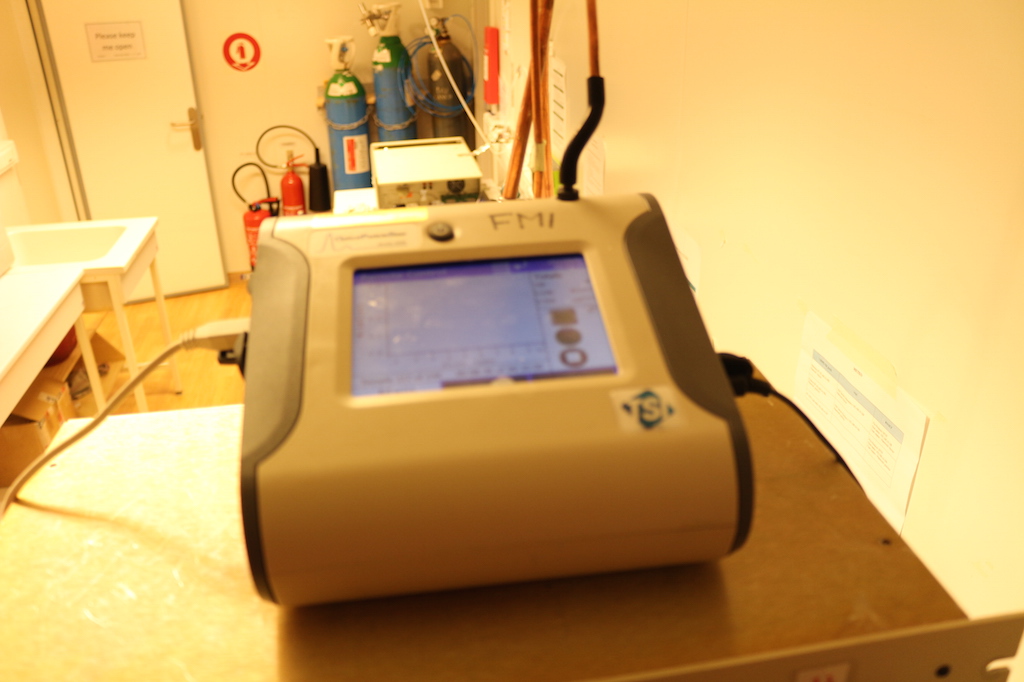
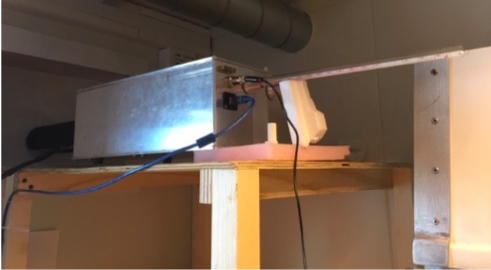
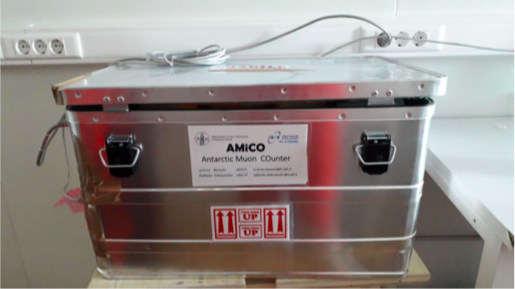
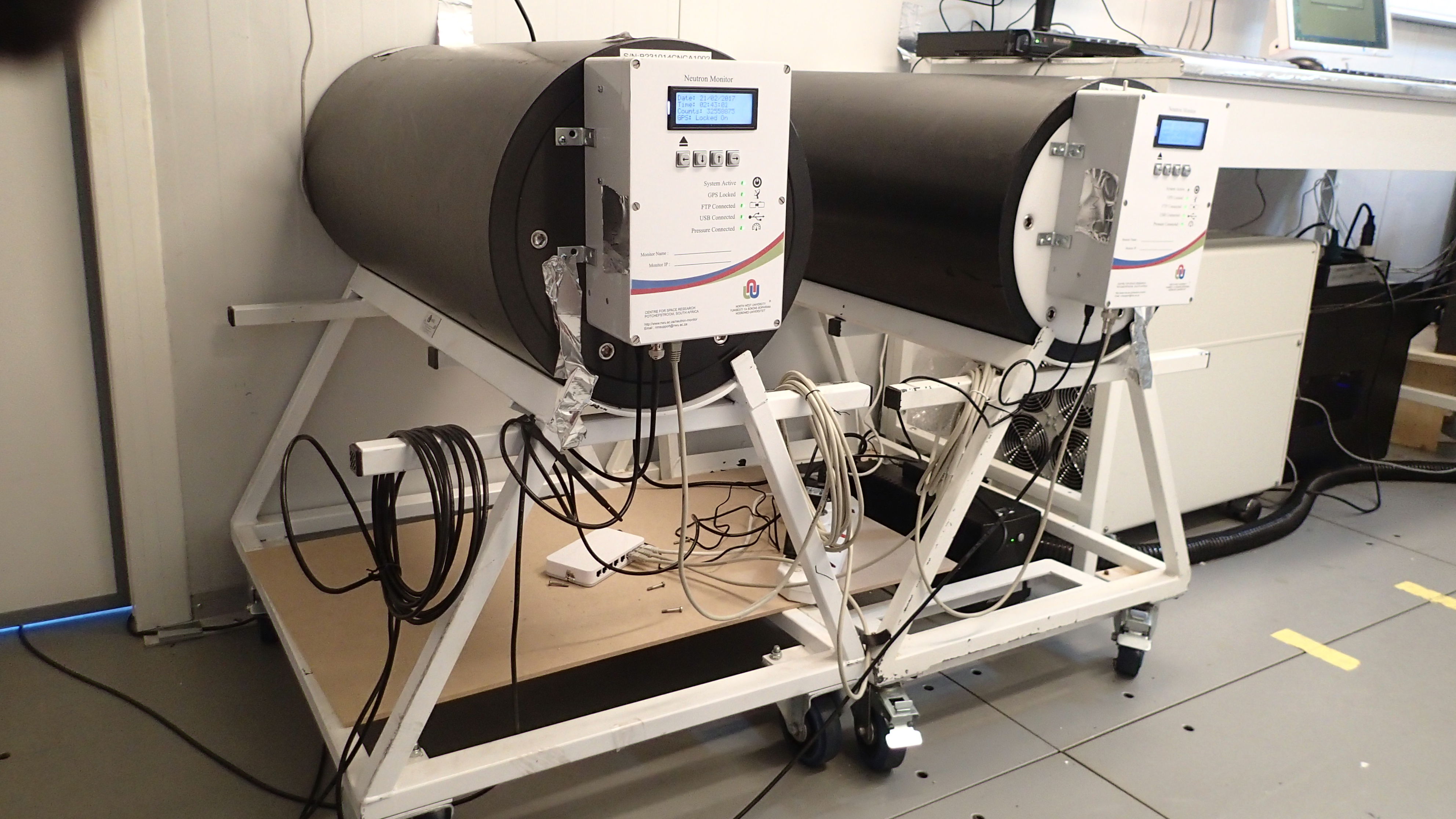
About Us
Prof. Rita Traversi - rita.traversi@unifi.it
Unit Responsible: Prof. Rita Traversi (University of Florence – traversi@unifi.it)
University of Florence (Silvia Becagli, Mirko Severi, Laura Caiazzo – currently INFN Florence, Alessandra Amore, Raffaello Nardin, Rita Traversi)
- Set up of an array of sampling and measurement devices to be used for long-term studies (bulk PM10 at low and medium vol., 4-stage impactors)
- Devoted chemical analyses (ion content, major and trace metals, EC/OC) on continuously collected aerosol and snow samples
INFN Florence (National Institute of Nuclear Physics) and Department of Physics and Astronomy, University of Florence (Lorenzo Bonechi, Raffaello d’Alessandro)
- Continuous measurement of Cosmic Ray flux by Muon Counter (AMiCO) to study possible correlations with the rate of production of particulate matter and atmospheric conditions
University of Oulu – Finland (FINNARP and Academy of Finland Project: CRIPA – “Cosmic Rays In Polar Atmosphere” – PI: Prof. Ilya Usoskin, Stepan Poluianov)
- Continuous measurement of Cosmic Ray flux variability in the high-elevation polar atmosphere and study of their effects by 2 Neutron Monitors
Unit Responsible: Dr. Paolo Cristofanelli (CNR-ISAC Bologna– paolo.cristofanelli@isac.cnr.it)
CNR-ISAC Bologna (Paolo Cristofanelli, Davide Putero, Francesco Calzolari, Maurizio Busetto)
- Investigation of the variability of near-surface ozone and aerosol physical properties (absorption and scattering coefficient, size distribution) in the continental Antarctic PBL
- Related performing of QA/QC actions to assure the quality of recorded data
CNR-IIA, Rome (A. Ianniello, F. Vichi, G. Esposito, M. Frattoni, A. Imperiali)
- Summer campaigns of sampling and analysis of VOCs and gas/particulate repartition for N-cycle species
FMI (Finnish Meteorological Institute) and UHEL (University of Helsinki) – Finland (Aki Virkkula, John Backman, Pasi Aalto)
- Continuous measurements of size distribution, light scattering and absorption measurements, cluster ion counting
Unit Responsible: Prof. Andrea Gambaro (University of Ca’ Foscari, Venice – gambaro@unive.it)
University of Ca’ Foscari, Venice (Andrea Gambaro, Elena Barbaro, Matteo Feltracco)
- Summer campaigns of PM10 aerosol sampling and analysis of a number of species: 40 free L- and D- amino acids, 7 monosaccharides (arabinose, fructose, galactose, glucose, mannose, ribose, xylose), 8 alcohol-sugars (arabitol, erythritol, mannitol, ribitol, sorbitol, xylitol, galactitol, maltitol), 3 anhydrosugars (levoglucosan, mannosan and galactosan), sucrose, 11 phenolic compounds (PC) (vanillic acid, isovanillic acid, homovanillic acid, vanillin, syringic acid, syringaldehyde, p-coumaric acid, coniferaldehyde, acetosyringone, acetovanillone and ferrulic acid)
Unit Responsible: Prof. Marco Grotti (University of Genova – grotti@unige.it)
University of Genova (Marco Grotti, Francisco Ardini)
- Elemental and isotopic analysis of PM10 aerosol and snow samples (in collaboration with SIDDARTA project)
Metadata
| Kind of Sampling | Location | From (date) | To (date) | Resolution Time | Type of Measurement | Research Unit (RU) |
|---|---|---|---|---|---|---|
| Skypost PM10 | ATMOS shelter | 05/12/2016 | Currently ongoing | Daily | Bulk PM10 by low-volume sampler devoted to the analysis of chemical ionic markers | RU 1 - University of Florence |
| Dekati-4 | ATMOS shelter | 05/12/2016 | Currently ongoing | 4 days | Size-segregated aerosol by 4-stage inertial impactor by low-volume sampler devoted to the analysis of ionic markers and major metals | RU 1 - University of Florence |
| PM10 ECHO-PM | ATMOS shelter | 13/12/2016 | Currently ongoing | 8 days | Bulk PM10 by low-volume sampler devoted to the measurements of Elemental and Organic Carbon | RU 1 - University of Florence |
| PM10 ECHO-PUF | ATMOS shelter | 28/01/2017 | Currently ongoing | 32 days | Bulk PM10 by medium-volume sampler devoted to the determination of main and trace metals by ICP-MS and PIXE techniques | RU 1 - University of Florence / RU 4 - University of Genova |
| Surface Snow | Clean Area | 05/12/2016 | Currently ongoing | 2 days | Measurements devoted to the analysis of chemical ionic markers | RU 1 - University of Florence |
| Muon Counter (AMiCO) | PHYSIC shelter | 23/12/2017 | Currently ongoing | 1 minute | Continuous monitoring of the charged cosmic rays intensity | RU 1 - INFN of Florence |
| Neutron Counter | PHYSIC shelter | December 2014 | Currently ongoing | 1 minute | Cosmic Ray Flux measurements | RU 1 - University of Oulu |
| Ozone analyzer | ATMOS shelter | December 2016 | Currently ongoing | 1 minute | Measurements of variability of near-surface ozone | RU 2 - CNR-ISAC of Bologna |
| DMPS | ATMOS shelter | December 2007 | Currently ongoing | 13 minutes | Differential Mobility Particle Sizer: measurements of particle size distribution in the 10 - 1000 nm size range | RU 2 - FMI and UHEL of Helsinki |
| OPS | ATMOS shelter | December 2007 | Currently ongoing | 10 minutes | Optical Particle Sizer: measurements of particle size distribution in the 0.3 - 10 nm | RU 2 - FMI and UHEL of Helsinki |
| Nephelometer | ATMOS shelter | December 2007 | Currently ongoing | 3 seconds | Measurements of scattering e backscattering radiation at 3 wavelengths | RU 2 - FMI and UHEL of Helsinki |
| PSAP | ATMOS shelter | December 2007 | Currently ongoing | 1 second | Particle Soot Absorption Photometer: Measurements of absorption at 3 wavelengths (660, 530, 467 nm) | RU 2 - FMI and UHEL of Helsinki |
| CIC | ATMOS shelter | December 2018 | Currently ongoing | 1 second | Cluster ion counter: measurements of ion size distributions in the sub 1 nm to about 3 nm | RU 2 - FMI and UHEL of Helsinki |
| HV-PM10 | Roof of ATMOS shelter | 2016-2017, 2017-2018, 2018-2019, 2019-2020 summer campaigns | Currently ongoing during summer | 10 days | Multi-stage high volume impactor devoted to the analysis of phenolic compounds, free amino acids and sugars | RU 3 - University Ca' Foscari of Venice |
| Surface Snow | Clean Area | December 2016 | Currently ongoing | 30 days | Measurements devoted to the analysis of isotopic analysis by ICP-AES, ICP-QMS or ICP-SF-MS | RU 4 - University of Genova |
Summer Campaigns
2016/2017 Summer Campaing:
- Equipping a new laboratory in the "ATMOS" shelter with several sampling and measurement devices:
- 1 Skypost for daily PM10 sampling
- 1 ECHO-PM for the 4-stage impactor Dekati-4, with 4-day resolution
- 2 ECHO-PUF for the metal sampling, with 32-day resolution
- 1 ECHO-PM for EC-OC, elementary and organic carbon, sampling, with 8-day resolution
- 1 ECHO-PM for the daily NO3- sampling, lasted only 4 months in total, during the summer campaign and the first period of the winter campaign
- 1 high-volume sampler for halogen sampling, during the summer campaign
- ozone analyser
- a meteorological trigger with an anemometer on the roof, to prevent possible influences of the Base
- Holing the wooden plates on the roof of the shelter, insulating them with the rockwool panels, and allowing the passage of the metal pipes and temperature probes connecting samplers (inside the shelter) to the cut-off heads (on the roof)
- Putting on wooden panels the aspiration pumps, in order to dampen vibrations and related noise
- Building specific housings (by wood and polyethylene plates) to prevent snow accumulation on the sampling head on the roof
- Carrying out maintenance and instrument intercomparisons of continuous size distribution measurements:
- nephelometer
- DMPS
- OPS
- PSAP
- Starting with superficial snow samples collected in the “clean area”
2017/2018 Summer Campaing:
- Prosecution of the atmospheric and superficial snow sampling
- Halogen sampling with a high-volume sampler during the summer campaign
- Atmospheric measurements of the largest portion of the organic fraction (VOC, aldehydes, carboxylic acids) during summer period
- Installing of a new anemometer and trigger
- Installing of the muon counter
- Intercomparison of PSAP system with a similar system calibrated
- Checking of DMPS performances by intercomparison with a portable CPC (Condensation Particle Counter)
- Packing of all the samples at -20°C ready for shipping to Italy
- Training to the new winterover personnel
2018/2019 Summer Campaign:
- Prosecution of the atmospheric and superficial snow sampling
- Annual checking and maintenance of all the instrumental set: atmospheric aerosol samplers, aspiration pumps, particle counters and ozone analyser
- Atmospheric measurements of the largest portion of the organic fraction (VOC, aldehydes, carboxylic acids) during summer period
- Substitution of all the cables of the high-volume sampler and starting of the halogen sampling during summer period
- Back-up of all the data registered during the previous winter period
- Rearrangement of the anemometer on the roof of the shelter and changing the set-up of the trigger program for stopping the pumps
- Reorganization of the rooms inside ATMOS shelter
- Removal of the wooden housing on the roof
- Replacing of the PSAP instrument with a less noisy one
- Installation of the Cluster Ion Counter (CIC)
- Packing of all the samples at -20°C ready for shipping to Italy
- Training to the new winterover personnel
2019/2020 Summer Campaign:
- Prosecution of the atmospheric and superficial snow sampling
- Annual checking and maintenance of all the instrumental set: atmospheric aerosol samplers, aspiration pumps, particle counters, ozone analyser, and neutron and muon counters
- Halogen sampling with a high-volume sampler during the summer campaign
- Back-up of all the data registered during the previous winter period
- Substitution of the connection cable of the anemometer and of the relays of the meteorological trigger
- Adding of some function in the trigger’s program
- Packing and sending back to Italy the Skypost and substitution with a new automatic PM10 sampler (Giano DadoLab)
- Packing of all the samples at -20°C ready for shipping to Italy
- Training to the new winterover personnel
Collaborations
INTERNATIONAL COLLABORATIONS AND SCIENTISTS INVOLVED
- IGE (Grenoble, France). Dr. J. Savarino – N-species sources and air/snow processes; Dr. M. Legrand – biogenic S compounds; Dr. B. Jourdain – sea spray aerosol
- KOPRI (Incheon, South Korea). Dr. Y.J. Yoon. Comparison of aerosol chemical and physical properties with other Antarctic sites, King Sejong Station and Jang Bogo Station
- Institute of Alpine and Arctic Research (INSTAAR); University of Colorado (Boulder, USA). Dr. D. Helmig: N-cycle compounds at DC and comparison South Pole – DC aerosol
- Desert Research Institute (Reno, Nevada). Prof. J. McConnell: comparison South Pole – DC aerosol and ice core stratigraphies study
- University of Ghent (Ghent, Belgium). Prof. F. Vanhaecke. Pb, Sr and Nd isotopic ratio by multi-collector ICP-MS measurements
- Sodankylä Geophys. Obs. (Sodankylä, Finland), University of Oulu. Prof. I.G. Usoskin, Dr. S. Poluianov: Cosmic Rays monitoring
- FMI (Helsinki, Finland). Dr. A. Virkkula. Continuous size distribution measurements by OPC and DMPS
- Joint Antarctic Research Institute (Wellington, NZ). Prof. N. Bertler: geochemical cycles, mineral dust source areas and ice core records.
- EMPA (CH). Dr. C. Zelwegger: World calibration Center Surface O3
COLLABORATIONS ON FIELD
- Personnel of SIDDARTA project (P.I. Silvia Nava)
- Personnel of BrHgSnow project (P.I. Andrea Spolaor)
- Personnel of BSRN project (P.I. Angelo Lupi)
Publications
Poluianov, S.V., I.G. Usoskin, A.L. Mishev, et al., GLE and Sub-GLE Redefinition in the Light of High- Altitude Polar Neutron Monitors, Solar Phys., 292, 176, 2017, doi: 10.1007/s11207-017-1202-4.
Poluianov, S., I. Usoskin, A. Mishev, et al. Revisited definition of GLE, Proc. Sci. (ICRC2017), Proc. 35rd Internat. Cosmic Ray Conf., Busan, 125, 2017.
Cristofanelli et al., Analysis of multi-year near-surface ozone observations at the WMO/GAW “Concordia” station (75°06′S, 123°20′E, 3280 m a.s.l. – Antarctica), Atmospheric Environment, 177, 54-63, 2018.
Mishev, A.L., I.G. Usoskin, Assessment of the radiation environment at commercial jet-flight altitudes during GLE 72 on 10 September 2017 using neutron monitor data, Space Weather, 16, 1921-1929, 2018, doi: 10.1029/2018SW001946.
Gil, A., G.A. Kovaltsov, V.V. Mikhailov, A. Mishev, S. Poluianov and I.G. Usoskin, An Anisotropic Cosmic-Ray Enhancement Event on 07-June-2015: A Possible Origin, Solar Phys., 293, 154, 2018, doi: 10.1007/s11207-018-1375-5.
Mishev, A., I. Usoskin, O. Raukunen, M. Paassilta, E. Valtonen, L. Kocharov, R. Vainio, First Analysis of Ground-Level Enhancement (GLE) 72 on 10 September 2017: Spectral and Anisotropy Characteristics, Solar Phys., 293, 136, 2018, doi: 10.1007/s11207-018-1354-x.
Mishev, A., I. Usoskin, Analysis of sub-GLE and GLE events using NM data: space weather applications, J. of Phys.: Conf. Series, 1, 1181, 2019, doi: 10.1088/1742-6596/1181/1/012006.
Conference Contributions
Traversi, R., S. Becagli, L. Caiazzo, M. Busetto, F. Calzolari, P. Cristofanelli, B. Petkov, M. Severi. Composizione chimica dell’aerosol atmosferico e della neve superficiale a Dome C (Antartide Orientale) risultati da 10 anni di attività. ORAL. “VIII Convegno Nazionale sul Particolato Atmosferico” PM2018 – 23-25 Maggio 2018, Matera.
Becagli, S., R. Traversi, M. Severi, L. Caiazzo, L. Lazzara, G. Mori, C. Marchese, C. Scarchilli, V. Ciardini. Aerosol biogenico in Antartide centrale. Deduzioni sulle interazioni oceano-atmosfera. ORAL. “VIII Convegno Nazionale sul Particolato Atmosferico” PM2018 – 23-25 Maggio 2018, Matera.
Traversi, R., S. Becagli, L. Caiazzo, M. Busetto, F. Calzolari, P. Cristofanelli, B. Petkov, M. Severi. Aerosol and Surface Snow Chemical Composition at Dome C from 10-yr Long Records. ORAL. “A SCAR & IASC Conference” Polar2018 – 15-26 June 2018, Davos.
Becagli, S., R. Traversi, M. Severi, L. Caiazzo, L. Lazzara, G. Mori, C. Marchese, C. Scarchilli, V. Ciardini. Biogenic Aerosol in Central Antarctica: The Ocean-atmosphere Interaction. POSTER. “A SCAR & IASC Conference” Polar2018 – 15-26 June 2018, Davos.
Virkkula, A., V.-M. Kerminen, T.Petäjä, G. De Leeuw, E. Asmi, D. Brus, T. Laurila, H. Timonen, K. Teinilä, E. Rodriquez, J. Svensson, V. Aaltonen, J. Backman, R. Hillamo, M. Sipilä, T. Jokinen, E. Järvinen, T. Nieminen, R. Väänänen, H. Manninen, X. Chen, P.P. Aalto, H. Grythe, M. Busetto, C. Lanconelli, A. Lupi, V. Vitale, R. Weller, A.C. Saulo, and M. Kulmala: Final results of a project on Antarctic aerosols in 2013 -2016. Proceedings of the NOSA-FAAR Symposium 2018, Report Series in Aerosol Science, 208, 134 (http://www.atm.helsinki.fi/FAAR/reportseries/rs-208.pdf), 2018.
Virkkula, A., Grythe, H., Backman, J., Aalto, P.P, Petäjä, T., Busetto, M., Lupi, A., Vitale, V., Udisti, R., Becagli, S., Sheridan, P., Ogren, J., and Kulmala, M.: Surface Aerosols at Dome C and Comparison with Observations at the South Pole, Abstract nr. 2499. “A SCAR & IASC Conference” Polar2018 – 15-26 June 2018, Davos.
Traversi, R., S. Becagli, L. Caiazzo, M. Busetto, F. Calzolari, P. Cristofanelli, B. Petkov, M. Severi. KEYNOTE. Chemical composition of atmospheric aerosol and surface snow at Dome C (East Antarctic Ice Sheet): an overview from 10-yr long records. “XXVII Congresso della Divisione di Chimica Analitica” – 16-20 Settembre 2018, Bologna, Italy.
Becagli, S., R. Traversi, M. Severi, L. Caiazzo, L. Lazzara, C. Marchese. Insight on the Ocean- Atmosphere interaction in polar Southern Emisphere by long term aerosol measurements in Central Antarctica. POSTER. “XXVII Congresso della Divisione di Chimica Analitica” – 16-20 Settembre 2018, Bologna, Italy.
Lascia un commento
Devi essere connesso per inviare un commento.

